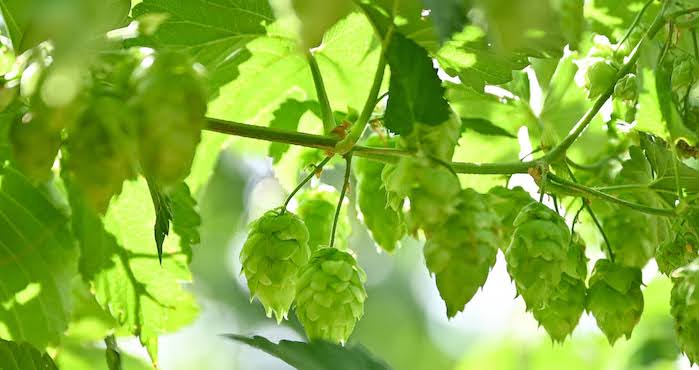Hop Science Newsletter (August 2016)
In this issue: variables in dry-hopping, experimenting with HSI values, and how polyphenol profiles of different hop varieties impact beer flavor.

PRACTICAL VARIABLES IN DRY HOPPING?
The team at New Belgium Brewing in the U.S. investigated the influence of hopping rate, temperature and alcohol in beer to see what the driving parameters are in dry hopping. They used a non-dry hopped IPA with 7,5% and 9% alcohol as base beers and worked with 125g, 250g and 500g per hl for dry hopping at temperatures of 6 and 12°C. They found that the dosing amount and the temperature are of greater importance than the alcohol content. However the yield of the measured components (linalool, myrcene, caryophyllene and humulene) did not increase linearly with increased amount of hops used. The non-polar components were better extracted at the lower temperature.¹
NOW WE KNOW WHERE SPICINESS COMES FROM!
The hunt for the spiciness in hoppy beers was already reported a couple of times in previous Newsletters with the results that sesquiterpene oxidation products play a key role for spiciness. In these pilot scale brewing trials this team was able to confirm that the responsible compounds for spiciness are: humulenol II, humulene epoxide III, caryophylla-4(12),8(13)- diene-5-ol, 14-hydroxy-ß-caryophyllene, 3Z-caryophylla-3,8(13)-diene-5α-ol and 3Z-caryophylla- 3,8(13)-diene-5ß-ol. So we can most probably check spiciness off our list!²
HOW IMPORTANT IS THE HSI VALUE FOR THE SENSORY PROPERTIES OF WHIRLPOOL HOPPED AND DRY HOPPED BEERS?
The HSI value is a very important parameter for brewers to evaluate the quality of hops used for brewing. However, few investigations have been done on the sensorial influence on the final beer when hops with higher HSI values are used. Our team worked with the varieties Perle and Saaz, purposely oxidizing the samples resulting in HSI values varying between 0,27 (low), 0,33 (medium) and 0,49 (high). Beers produced were hopped in the whirlpool and additionally dry hopped. With the whirlpool hopped beers, the HSI value was less important than in the dry hopped beers. The beers dry hopped with hops of high HSI values were rated slightly lower in flavor and aroma quality, however not significantly.2
POLYPHENOL PROFILES OF DIFFERENT HOP VARIETIES AND THEIR IMPACT ON BEER FLAVOR
This Japanese research team investigated the different polyphenol profiles of the varieties Hallertau Mittelfrüh, Hallertau Tradition, Saazer, Tettnanger, Perle and Cascade. Analyzing a range of different polyphenol monomers, they found that the classic European land varieties have more proanthocyanidin whereas the others had more flavonones and prenylflavonoids. These different profiles showed a flavor difference in the brewed beers in regards to sweetness and astringency. A strong correlation to the genetic heritage was also visible. The researchers found that proanthyocyanidin correlates with the fullness of beer while the content of flavonone and prenylflavonoid correlates with the intensity of astringency.3
EVENTS
Upcoming Hops Academies:
• September 20th & 21st in Spalt, Germany. All about hop flavours in two days, all lectures in German: http://www.barthhaasgroup.com/images/pdfs/date_infos_hops_academy/hopsacademyreinerhopfengeschmack09-2016.pdf
• September 27th & 28th in Yakima, USA. (This session is fully booked but another session has been scheduled for September 29th & 30th). For more information, contact Tim.Kostelecky@johnihaas.com
REFERENCES:
1. Holbrook, C.: Dry hopping of Beer, oral presentation at the World brewing congress 2016, http://www.worldbrewingcongress.org/congress/Abstracts/Pages/default.aspx
2. Zunkel, M.: Effects in beer hopped with German Perle and Czech Saaz pellet hops with three different HSI values, poster presentation 138 at the World Brewing Congress 2016, http://www. worldbrewingcongress.org/congress/Abstracts/Pages/default.aspx
3. Hasegawa, T.: Comparison of characteristics of taste and polyphenols in beer using different hop varieties, poster presentation 129 at the World Brewing Congress, http://www. worldbrewingcongress.org/congress/Abstracts/Pages/default.aspx



